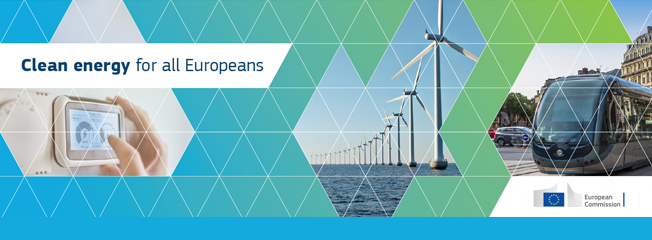Clean energy for all Europeans package completed: good for consumers, good for growth and jobs, and good for the planet

Today 22 May, the Council of ministers of the EU formally adopted four new pieces of EU legislation that redesign the EU electricity market to make it fit for the future. This concludes the remaining elements of the Clean energy for all Europeans package and represents a major step towards completing the Energy Union, delivering on the priorities of the Juncker Commission.
The gradual transition towards clean energy and a carbon-neutral economy is one of the greatest challenges of our time. The EU, in 2016, decided to tackle it by rewriting the EU’s energy policy framework to facilitate this clean and fair energy transition. By providing a modern, stable legal environment and setting a clear and common sense of direction, the EU can stimulate the necessary public and private investment and bring European added value by addressing these challenges together. As a package, the new rules will reinforce consumer rights, putting them at the heart of the energy transition; they will create growth and green jobs in a modern economy leaving no region and no citizen behind. They will enable the EU to show leadership in the fight against climate change following the Paris Agreement.
Commissioner for Climate Action and Energy Miguel Arias Cañete said:
“This is the most ambitious set of energy proposals ever presented by the European Commission. It has been adopted in record time with impressive support from the European Parliament and Council. With its completion, we have made the EU’s Energy Union – one of the ten political priorities of the Juncker Commission – a reality. I truly believe it will accelerate the clean energy transition and give all Europeans access to secure, competitive and sustainable energy.”
The Clean energy for all Europeans package sets the right balance between making decisions at EU, national, and local level. Member States will continue to choose their own energy mix, but must meet new commitments to improve energy efficiency and the take-up of renewables in that mix by 2030. For example, the new rules on the electricity market, which have been adopted today, will make it easier for renewable energy to be integrated into the grid, encourage more inter-connections and cross-border trade, and ensure that the market provides reliable signals for future investment. Today’s rules also require Member State to draft plans to prevent, prepare for and manage possible crisis situations in the supply of electricity in coordination with neighbouring Member States, and to enhance the role of the Agency for the Cooperation of Energy Regulators (ACER).
Background
The EU was an early mover on clean energy: it was the first major power in the world to set, in 2009, ambitious energy and climate targets for 2020 (20% greenhouse gas emission reduction, 20% in renewable energy and 20% energy efficiency). Ten years later, the EU is broadly on track to achieve theses 2020 objectives, proving it is possible to reduce emissions and achieve GDP growth at the same time. In the meantime, renewable energy has become much cheaper. Moreover, with the 2015 Paris Climate Agreement, the EU pledged to move further ahead and achieve greenhouse gas emission reductions of at least 40% by 2030. In order to respond to this challenge and continue to lead the global energy transition, the Commission proposed in 2016 a set of ambitious new rules called the “Clean Energy Package for all Europeans”. With this package the Commission addressed all 5 dimensions of the Energy Union (1) energy security; 2) the internal energy market; 3) energy efficiency; 4) decarbonisation of the economy; and 5) research, innovation and competitiveness.). It is composed primarily of the following elements:
- Energy efficiency first: the revamped directive on energy efficiency sets a new, higher target of energy use for 2030 of 32.5%, and the new Energy performance of buildings directive maximizes the energy saving potential of smarter and greener buildings.
- More renewables: an ambitious new target of at least 32% in renewable energy by 2030 has been fixed, with specific provisions to foster public and private investment, in order for the EU to maintain its global leadership on renewables.
- A better governance of the Energy Union: A new energy rulebook under which each Member State drafts National Energy and Climate Plans (NECPs) for 2021-2030 setting out how to achieve their energy union targets, and in particular the 2030 targets on energy efficiency and renewable energy. These draft NECPs are currently being analysed by the Commission, with country-specific recommendations to be issued before the end of June.
- More rights for consumers: the new rules make it easier for individuals to produce, store or sell their own energy, and strengthen consumer rights with more transparency on bills, and greater choice flexibility.
- A smarter and more efficient electricity market: the new laws will increase security of supply by helping integrate renewables into the grid and manage risks, and by improving cross-border cooperation.
In addition to the legislative acts of the package, the Commission also proposed a number of non-legislative initiatives, in particular to ensure a fair and just transition where nobody and no region is left behind:
- The Coal regions in transition initiative;
- The Clean energy for EU islands initiative;
- Measures to define and better monitor energy poverty in Europe.
Fuente: ec.europa.eu

Dejar un comentario
¿Quieres unirte a la conversación?Siéntete libre de contribuir